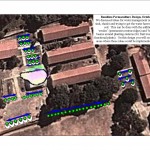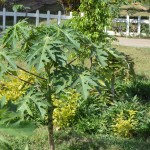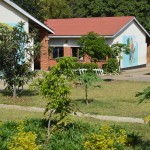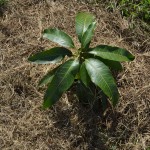

Bambino Primary School in Lilongwe, Malawi has been working hard to upgrade their landscaping to include better water management along with the addition of nutritious plants. Last year the school organized a visit to Never Ending Food with about 25 of their teachers and staff members. After the visit, they invited Kristof Nordin to the school to give a presentation on the possibility of using Permaculture practices to improve the school grounds as well as helping to improving the health and well-being of its students. Kristof and Stacia’s daughter, Khalidwe, happens to be one of these students!
From this presentation, interest was expressed in creating a design for the school, so Kristof met weekly for over almost two months with the school’s ‘Environment and Climate Change’ Committee. This group did several observational walks around the school grounds and discussed where changes could be made to make better use of the school’s existing resources. They looked at better use of rainwater from the roofs of the buildings and from the rainwater gutters which surround these buildings; they discussed the potential use of ‘swale’ systems to help ‘stop, spread, sink, and shade’ all runoff rainwater, and they looked at areas where more fruit trees could be incorporated into the existing systems.


After the design was presented to the school’s Director and permission was granted, students began implementing some of these changes. During the rainy season that has just come to an end, students planted trees of papayas and mangoes (both rich sources of Vitamin A, in which Malawi currently faces deficiencies). The students also made ‘half-moon’ basins around these trees to help harvest water into the planting stations, and mulched heavily with grass clippings to minimize the need for watering during the dry season. A super start for the school and we hope to see these efforts continue to grow into a full-scale ‘edible schoolyard’! Keep up the great work!
